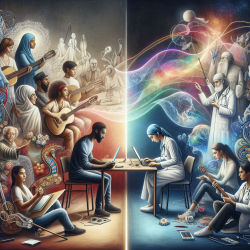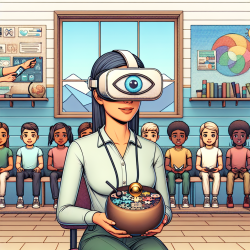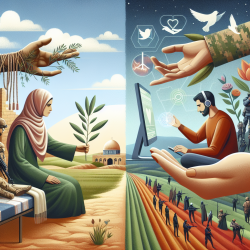Introduction
In the realm of medical education, the integration of creative projects into the curriculum has emerged as a powerful tool for fostering empathy and emotional connection. A recent study titled Medical students’ creative projects on a third year pediatrics clerkship: a qualitative analysis of patient-centeredness and emotional connection sheds light on how these projects can enhance practitioners' skills. This blog explores the study's findings and offers insights on how practitioners, including those in special education and therapy, can benefit from implementing creative projects in their practice.
The Power of Creative Projects
The study analyzed 520 creative projects completed by medical students during a pediatrics clerkship. These projects, which included personal narrative essays, poetry, and art, were designed to encourage students to adopt a patient-centered, emotionally connected approach to care. The findings revealed that students who engaged in these creative endeavors were more likely to express empathy, optimism, and a deep understanding of patient experiences.
Key Findings and Implications
- Patient-Centered Themes: The majority of projects focused on patient-centered care, emphasizing the importance of building strong relationships with patients and their families.
- Emotional Expression: Students expressed a wide range of emotions, with a significant number of projects adopting an empathic tone. This suggests that creative projects can help students and practitioners alike to better understand and manage their emotions.
- Personal Voice: Many projects utilized a personal voice, allowing students to reflect on their own experiences and the perspectives of their patients. This approach can be particularly beneficial for therapists and educators seeking to deepen their connection with clients.
Implementing Creative Projects in Practice
For practitioners in special education and therapy, incorporating creative projects into your practice can lead to significant improvements in empathy and patient-centered care. Here are some practical steps to get started:
- Encourage Reflective Writing: Ask students or clients to write about their experiences, focusing on emotions and relationships. This can help them develop self-awareness and empathy.
- Incorporate Art and Storytelling: Use art and storytelling as tools for expression. Encourage clients to create visual or narrative representations of their experiences.
- Facilitate Group Discussions: Create a safe space for group discussions where participants can share their creative projects and reflect on their emotional journeys.
Further Research and Exploration
The study highlights the potential of creative projects to transform medical education and practice. However, further research is needed to explore the long-term impact of these projects on empathy and patient care. Practitioners are encouraged to engage in ongoing research and share their findings with the broader community.
To read the original research paper, please follow this link: Medical students’ creative projects on a third year pediatrics clerkship: a qualitative analysis of patient-centeredness and emotional connection.










